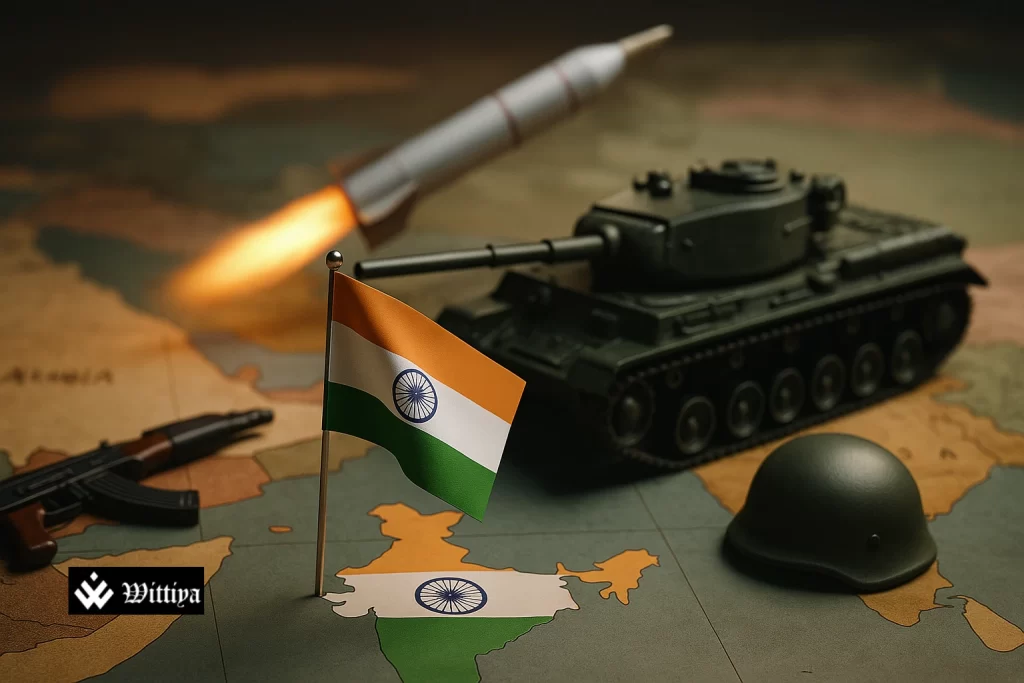India is increasingly concerned that recent strikes between Iran and Israel, especially attacks across the Gulf and Red Sea, could escalate into a wider regional conflict. The National Oil Companies and key sectors like aviation, paints, and pharmaceuticals may face disruptions. Economic headwinds could include surging crude prices, a weaker rupee, and supply chain issues.
Recent escalations between Iran and Israel, including strikes across the Strait of Hormuz and Red Sea, have heightened fears of a wider regional conflict that could seriously affect India’s economic stability.
1. Crude Oil Price Shock
India imports 80–85% of its crude oil. Brent crude surged 7–12% recently, reaching $78–$79 per barrel. Analysts at EY warn that even a $10 increase in crude can shave 0.3 percentage points off India’s GDP and add 0.4 points to CPI inflation. If the conflict disrupts transit through the Strait of Hormuz, prices could spike to $200–$300 per barrel.
2. Rupee Volatility
The rupee has fluctuated around ₹86 per USD, pressured by rising oil prices and investor uncertainty. The RBI may need to intervene to stabilize the currency and manage inflation expectations.
3. Aviation Sector Impact
Fuel costs account for over a third of airlines’ expenses. Elevated ATF prices could force fare hikes, reducing air travel demand. Airline stocks have already taken a hit as Middle East airspace uncertainty increases .
4. Freight and Shipping Costs
Escalating tensions may raise sea and air freight rates due to insurance surcharges and route diversions, impacting exporters and importers. Reliance on the Red Sea and Bab el-Mandeb routes intensifies these risks.
5. Paints & Pharma Price Pressure
Higher crude derivatives drive up costs for solvents and chemical inputs used by Asian Paints, Berger, Kansai Nerolac, and pharmaceutical manufacturers.
6. Food & Agri Trade Disruption
India’s exports of basmati rice and other agri products to Iran and Gulf nations face potential delays. Reports also indicate shortages in dry fruits due to disrupted supply chains.
7. Corporate Linkages
Major Indian firms like TCS and State Bank of India have operations tied to Israel and the Gulf. Broader instability could disrupt business, data centres, and banking operations.
8. Trade Deficit Expansion
India’s trade deficit could widen due to costlier imports and decreased exports, especially while oil prices and shipping costs rise.
9. Inflation & Growth Challenges
Higher fuel, transport, and import costs could reignite inflation. RBI might pause rate cuts, and GDP growth could dip from its projected 6.3–6.5% in FY26 .
10. Policy Responses
To mitigate risks, India is urged to diversify energy sources, bolster strategic reserves, and explore alternate logistics routes. Strategic corridors like IMEC may also face geopolitical hurdles.
Bottom Line
Though the situation hasn’t escalated into full-scale war, its potential to disrupt global energy and trade flows can have serious ramifications for India’s economy. The government, RBI, and businesses are closely monitoring developments, focusing on alternative supply chains, currency stability, and sectoral resilience.




